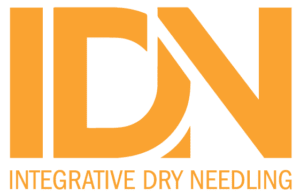Methodological considerations for dry needling trials in medial tibial stress syndrome
J Man Manip Ther. 2025 Dec 2:1-2. doi: 10.1080/10669817.2025.2595629. Online ahead of print. NO ABSTRACT PMID:41328671 | DOI:10.1080/10669817.2025.2595629
Home / My Account / Dry Needling Research
Authors:
Daniel Fernández-Sanchis, María Pilar López-Royo, Carolina Jiménez-Sánchez, Pablo Herrero, Manuel Gómez-Barrera, Sandra Calvo
Acupunct Med. 2022 Jun 7:9645284221085283. doi: 10.1177/09645284221085283. Online ahead of print.
ABSTRACT
OBJECTIVE: To compare the cost-effectiveness of three patellar tendinopathy treatments.
DESIGN: Secondary (cost-effectiveness) analysis of a blinded, randomised controlled trial, with follow-up at 10 and 22 weeks.
SETTINGS: Recruitment was performed in sport clubs. The diagnosis and the intervention were carried out at San Jorge University.
PARTICIPANTS: The participants were adults between 18 and 45 years (n = 48) with patellar tendinopathy.
INTERVENTIONS: Participants received percutaneous needle electrolysis, dry needling or sham needling, all of which were combined with eccentric exercise.
MAIN OUTCOME MEASURES: Costs, quality-adjusted life years and incremental cost-effectiveness ratio were calculated for each group.
RESULTS: The total cost per session was similar in the three groups: €9.46 for the percutaneous needle electrolysis group; €9.44 for the dry needling group; and €8.96 for the sham group. The percutaneous needle electrolysis group presented better cost-effectiveness in terms of quality-adjusted life years and 96% and 93% probability of being cost-effective compared to the sham and dry needling groups, respectively.
CONCLUSION: Our study shows that percutaneous needle electrolysis has a greater probability of being cost-effective than sham or dry needling treatment.
PMID:35670045 | DOI:10.1177/09645284221085283
J Man Manip Ther. 2025 Dec 2:1-2. doi: 10.1080/10669817.2025.2595629. Online ahead of print. NO ABSTRACT PMID:41328671 | DOI:10.1080/10669817.2025.2595629
J Man Manip Ther. 2025 Nov 29:1-10. doi: 10.1080/10669817.2025.2591677. Online ahead of print. ABSTRACT OBJECTIVE: Clinical guidelines recommend combining exercise with other
J Bodyw Mov Ther. 2025 Dec;45:493-501. doi: 10.1016/j.jbmt.2025.08.015. Epub 2025 Aug 31. ABSTRACT OBJECTIVE: Myofascial pain syndrome (MPS) is a chronic musculoskeletal
© Integrative Dry Needling 2025 | All rights reserved | Designed by Weblink
any IDN Course!
*Valid for new registrations only and can not be combined with other discount codes. Offer Expires: 7/7/2024

Not sure which course is right for you? No problem – we created an intuitive process to help!